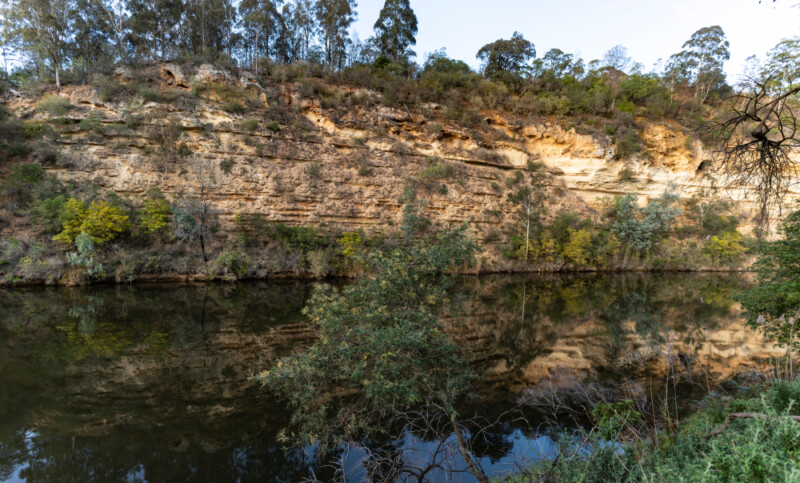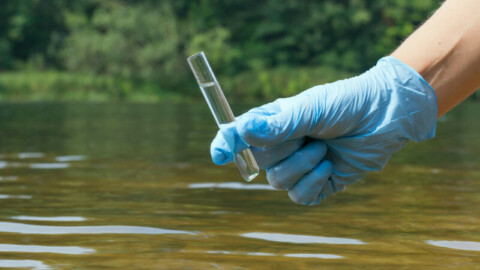Barwon Water and Gippsland Water have both released their Annual Water Outlook, forecasting the regions’ water security prospects.
Barwon Water
Barwon Water’s latest Annual Water Outlook showed the region’s water storages were in good shape in the short term. Storage levels were above 80 per cent at the start of summer, but with an expected hotter and drier future climate, water conservation was imperative for the future.
Barwon Water Managing Director, Tracey Slatter, said the Annual Water Outlook detailed the security of the region’s supply systems over the next two years, while the water corporation’s Water for our Future program was about ongoing careful planning with the community to secure supplies in the longer term.
“The Annual Water Outlook contains information about our region’s water supply systems, local population figures, forecast graphs of our storages for the next two years and how the region’s diverse supply options are being used,” Ms Slatter said.
“It also highlights the importance of investments made during the Millennium Drought, including in the Melbourne to Geelong pipeline and using the Anglesea borefield, as well as current proactive programs such as increased use of recycled water on the Bellarine, smart networks in Apollo Bay and Birregurra, and water efficiency programs with residential customers, businesses and schools.
“Without access to the Melbourne to Geelong pipeline and Anglesea borefield, storage levels for Geelong would be about 17 per cent lower.”
Ms Slatter urged everyone to consider how they used water and to follow the state’s permanent water saving rules, which help ensure Victorians use water more efficiently and encourage everyone to value this precious resource for the long term.
“During the Millennium Drought, and even more recently during the 2015-2016 El Niño and the hot dry start to 2019, we learned that water storages can draw down rapidly in dry periods,” Ms Slatter said.
Ms Slatter said that with climate change, we can no longer rely on rainfall alone to secure supplies, and this highlighted the importance of continuing to work with customers and community to secure the region’s water supplies for years to come through Barwon Water’s Water for our Future program.
“While it has felt wetter in parts of our region this year, we have actually had below average rainfall at West Barwon Reservoir in eight of eleven months this year,” Ms Slatter said.
“The long-term trend has seen a 32 per cent drop on average in inflows at West Barwon Reservoir since 1997 when compared to the long-term average prior to that year.”
Water for our Future recognises that with a hotter, drier climate and population growth, regions need to think differently about how they use water and where it comes from.
“While water supplies are secure for now, Barwon Water’s modelling shows that by 2029, demand could exceed supply, which is why, in partnership with the community, careful proactive planning for the future is required now, together with a continued focus on water efficiency and using our existing systems wisely,” Ms Slatter said.
To read Barwon Water’s 2020 Annual Water Outlook, click here.
Gippsland Water
Gippsland Water Managing Director, Sarah Cumming, said above-average rainfall had put local water supplies in a strong position for summer..
“Good rainfall this year has filled up many of our water supply systems,” Ms Cumming said.
“It’s extremely unlikely we’d need water restrictions this summer, even in our smaller communities which don’t have large water storage capacity.
“This is a great relief, following three years of record drought conditions in East Gippsland.”
Despite the reprieve from drought conditions, Ms Cumming warned against complacency.
“Although the immediate outlook is good, we are continuing to focus on addressing the threats to long-term water security in the region,” Ms Cumming said.
“We are putting in the work now to make sure we’re well prepared to support future population growth – and rise to the challenges of climate change.
“In the new year, we’ll be inviting the community to get involved in developing our next Urban Water Strategy.
“Our customers’ ideas and insight will be critical in the next stage of our planning.”
Gippsland Water’s Annual Water Outlook is released each December, detailing the capacity of its water systems and supply for the summer ahead.
To read Gippsland Water’s 2020 Annual Water Outlook, click here.

















